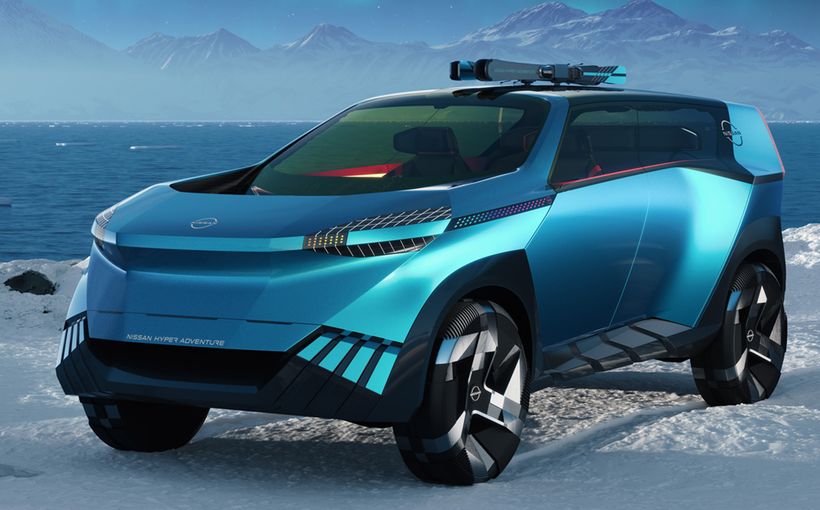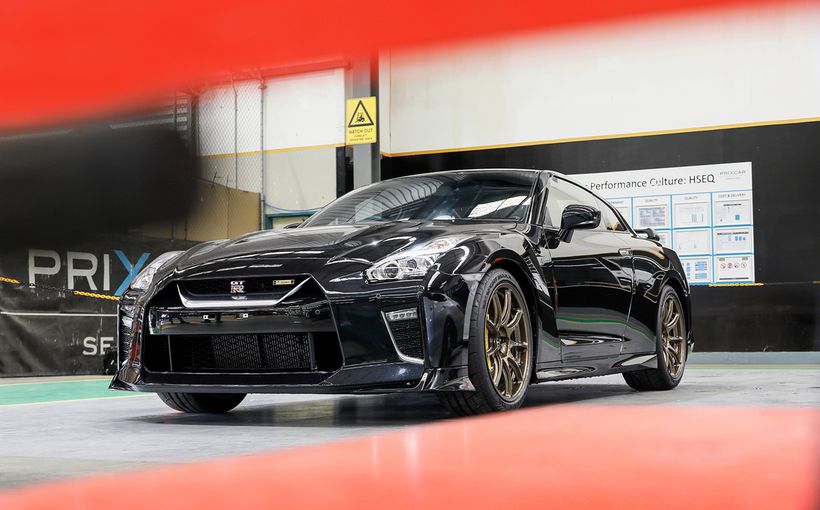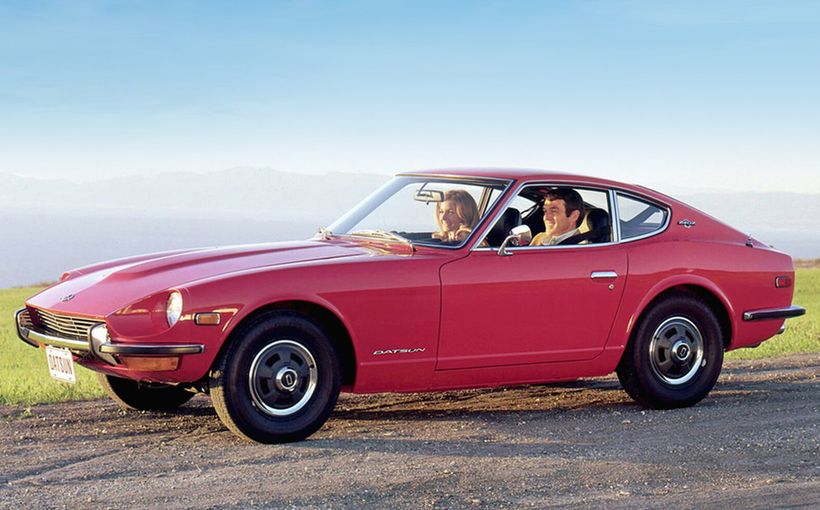Datsun Fairlady: From pretty little roadster into near-supercar

It is often overlooked that Nissan showed its Fairlady 1500 roadster at the 1961 Tokyo Motor Show, the year before the MGB made its debut. Arguably, both cars were underpowered for vehicles of their type heading into what would be the swinging sixties. But only one of these two manufacturers would be able to remedy that shortfall within the decade: whatever the Fairlady 1500 lacked by way of a hard edge, its 1967 successor, sold in Australia as the Datsun 2000 Sports more than remedied and was a much more convincing machine than the 'Bee', which had aged prematurely in five years.
We tend to credit the 1989 Mazda/Eunos Miata/MX-5 as a kind of re-imagined MGB but I reckon Nissan got there first with its single overhead camshaft 2.0-litre roadster way back in the year of Sergeant Pepper's Lonely Hearts Club Band, 1967. For the first time, a Japanese maker really had the measure of a British rival.
As for the 1961 car, it was not a bad first attempt at a sports machine intended more for export markets than Japan where mass motorisation was still quite a way into that country's increasingly westernised future. As late as 1965 less than six per cent of Japanese families owned a car. The Japanese government essentially demanded mergers between automotive manufacturers and in August 1966 Nissan merged with Prince.
This union would bring a renewed emphasis on sports models within Nissan, highlighted by the Skyline, which was marketed in Japan under separate dealerships. But the existence of the Fairlady showed that Nissan management already recognised the importance of such cars, especially for export markets – chiefly the US but also Australia and Europe.
The Fairlady that was proudly displayed on the Nissan stand at that 1961 show was the second model to bear that so-British name. The original first appeared in public in January 1960 and there's an appropriately charming story about how it acquired such a pretty name (even though it was a moniker that many red-blooded bronzed Aussie blokes of the 1960s disparaged, which explains why it quietly disappeared when the 2.0-litre model arrived here).

Katsuji Kawamata-san, the president of Nissan, had attended the Broadway production of My Fair Lady on a 1959 visit to American dealers, and hoped that some of Julie Andrews' allure (as Eliza Doolittle or, perhaps even more, herself) would rub off on the car. This hope was, to say the least, extremely optimistic for that first Fairlady was a plain little car, something of a small caricature of an Austin-Healey, complete with two-tone colour schemes.
Nissan's first foray into roadsters was in that same year, 1959. This was the S211, of which just 20 examples were produced. The S212 Fairlady was released in January 1960. Unlike its broadly similar looking predecessor, the Fairlady was built only in left-hand drive and intended exclusively for the US market. While the S211 made do with a 34-horsepower 988cc overhead-valve engine and a top speed somewhat north of 70 miles per hour, the first Fairlady received a 48-horsepower 1.2-litre engine and could reach 82 miles per hour.
Next came the SPL213, essentially the same machine with a dozen more horsepower. Unlike ostensible British rivals, this little droptop could seat four people. Already, under Katayama, Nissan was establishing a reputation for first-class customer service. A gentleman called Bruce Morikubo bought the first of 123 SPL212s destined for the US. Because his was the first, Datsun offered to paint it any colour he liked free of charge. It was finished in Cherry Blossom Pink and delivered by Speedway Motors in Tucson, Arizona, in mid-August 1960. Katayama also gave Bruce Morikubo honorary life membership of the Sports Car Club of Japan. Two hundred and ninety-seven of these cars were produced.
Build quality of the Fairlady was superior to any of the British roadsters while customer service was in another league entirely.

Nissan had learnt quickly what American motorists wanted and, by 1961, had established upwards of 60 dealerships. It was not until 4 October 1962 that the new SP310 Fairlady 1500 went on sale in the US. By this stage, MG had announced its monocoque MGB. As for Australia, that first Fairlady 1500 was never sold here, the decision having been taken to wait for the upgraded 85 horsepower model (the earlier car delivering just 77). Deliveries began in December 1963. Of course the local perception was that the Fairlady was a copy of the MG and some wits likened it to the MGA and suggested it was years behind the times.

In many respects the Fairlady 1500 actually was more like the MGA (the Abingdon firm's last car with a separate chassis) than the B. The body sat on a strong X-frame chassis. Performance was similar to the A's, with a top speed of 95 miles per hour and zero to 50 miles per hour in 10 seconds. The B could reach 60 in a fraction less than 12 seconds, while the Fairlady took 15.5. Fiat’s 1500 sedan of the same year could reach 90 miles per hour and accelerate to 60 in less than 13 seconds. Unlike the MGB (and the Fiat 1500), it had drum brakes all round which was its dynamic shortfall.

The 1488cc engine came from the lumbering Cedric sedan and offered 71 brake horsepower at 5000rpm. Road testers suggested that with a significant increase in power the Fairlady could be a world-beater.
It did show the Japanese way of the future though, not only with a new standard of customer care but also with its extensive list of standard equipment. By 1962 wind-up windows had replaced the old-fashioned side screens, there were seat belts, an alternator, clock, radio, cigarette lighter and windscreen washers. Options in the US market were limited to a tonneau cover, foglights and overriders. Road & Track noted: ‘We have never seen a car that comes with so many extras at no additional charge.’ Move over, Cadillac!

While the Fairlady name was not highly regarded in either Australia or the United States, in Japan it still had a long life to run. In time for the summer Olympics to be held in Tokyo in 1964, Nissan established a gallery on the second and third floors of the San-Ai building in Giza. Following a contest, five women were chosen to be Miss Fairlady. They were trained to answer technical questions. The idea was based on the Datsun Demonstrators of the 1930s whose role was to introduce the Japanese public to cars.
The first Fairlady offered locally had a third seat mounted across the rear of the passenger compartment. After about 1500 of these three-seaters had been produced (for worldwide consumption), a revised model with a padded parcel shelf instead of the occasional seat was introduced to the domestic Japanese market in June 1963. The battery was moved from beneath the now non-existent third seat into the engine bay, there was a much improved soft top and a new seven-gauge instrument panel. Turn the ignition off and the fuel and temperature needles swung around to rest on the right hand side – a charming touch. But the boot lost the luxury of full upholstery in favour of a cheap rubber mat. The Fairlady retained its eggcrate grille. This car came to Australia in the second half of 1964.
Then, before the end of 1965, the SP311 with 1.6-litre engine running twin SUs rather than Hitachis was released here. The 1.6 had an alloy cylinder head and, finally, synchromesh on first gear. Early examples had a three-bearing crankshaft, but a five-bearing crank was introduced in March 1967. Power was now 90 brake horsepower at 6000rpm, giving it MGB-equalling performance through the gears and in its 106 miles per hour top speed: perhaps the Fairlady 1600 even enjoyed a tiny margin against the stopwatch but it could not equal the B’s prodigious low- and mid-range torque from that redoubtable BMC B-Series engine.

Even more importantly, the car now had front disc brakes. Fourteen-inch wheels (replacing 13s) under bigger arches and a new grille with three horizontal bars were among a number of revisions.
The really big news came in 1967 with the introduction of the 2000 Sports, the Fairlady name having disappeared from Australian Datsun dealerships. Coded SR311, the 2000 would be the first car to begin to shape Nissan's huge reputation in international Motorsport. The 1600 SP311 continued. Both versions received a minor facelift outside and in. The 2000's 150-horsepower single overhead camshaft engine put the car way beyond the performance reach of the MGB which had changed in mostly minor ways since 1962, with the exception of a switch to a five-bearing crankshaft.

The 2000 Sports got a unique grille with a stylised 'D' emblem centrally placed. Sadly, the gorgeous dashboard made way for what could be described as the proverbial dog's breakfast. Anything that had been chromed was now painted battleship grey.
But the 2000 had finned alloy rear drums and a tandem brake master cylinder. There was a collapsible steering column, doubtless in deference to the Nader-era safety focus in the US, the car’s chief market. Most welcome, too, was the five-speed gearbox with overdrive on fifth. This car is often referred to as the '67 1/2 model' or – more evocatively – as the 'low screen 2000.'
Automotive historian, Mike Lawrence, said of the 2000: ‘It's price, specification and level of trim wiped out any reason to buy an MGB.’ He might also have mentioned the superior build quality, outstanding customer service and better reliability. And that word ‘specification’ is too general. This new version of the Datsun roadster could run the standing quarter-mile (400m) in 16.9 seconds and top 200km/h: by the late 1960s, 200 on the metric scale was like the old imperial 100! It could hit 60 miles per hour in 8.8 seconds. In the Australian context, had it not been for the introduction of the Ford Falcon GT that same year, the 2000 Sports would have seemed like a supercar.

This highly evolved edition of the Fairlady was equipped with two Solex twin-barrel sidedraught carburettors. Australian versions got a tonneau cover, foglights, deep pile carpet and – height of luxury – a pushbutton radio. Any comparison with the MGB was to the British car’s distinct disadvantage, Ralph Nader’s influence on car design was even more evident in the 1968 version of the 1600/2000, displayed at the Tokyo Motor Show in October 1967 and conceived to meet the new US Federal Motor Vehicle Safety standards. The metal dashboard was gone, replaced by a deformable plastic one. Padding abounded. Headrests were built into the seats.
The body was entirely new for 1968 but – in what would become the familiar Japanese way (note particularly the similarity of the 1993 Lexus LS400 to its predecessor or, before that, the 1982 GJ Sigma to the GH) – it looked very much like the old one. The most obvious difference was the windscreen frame which was now integral with the body and some two inches higher. The external door handles were now recessed. A total of 23,000 of these high screen models were made.

Nissan’s product planners were so happy with the international success of the Fairlady that they decided to retain the name for the all-new car which made its debut at the Tokyo Motor Show on 18 October 1969. This, of course, was the car we know (and love) as the 240Z but in Japan it was called the Fairlady Z.
At the time of its showing, popular thinking still clung to the notion that sports cars were distinct from coupes, that the open air component was intrinsic. But the more farsighted observers could already discern the writing on the office walls of the US safety legislators. It made sense for the next Fairlady to be produced as a coupe, even though some of the planners reckoned an open car would be less expensive to manufacture. But the coupe could be built as a monocoque, dispensing both with the separate chassis and the need to brace that chassis to minimise the inevitable torsional flexing.
Indeed, it was not until near the end of 1968 that the final decision was taken to produce the original Z-Car as a two-seater coupe with ideas of ‘two-plus-two’ (2 + 2), convertible and targa versions dropped for the short term.
The Fairlady Z was of course sold in Australia as the 240Z. Production of the old generation Fairlady open-topped cars finished in March 1970 but the Sports 2000 soldiered on in Australia for a few more months. It is difficult to imagine a clearer automotive example of the transition from the 1960s to the 1970s than the superseding of the Fairlady range by the 240Z: nowadays we absolutely treasure them both.











